A Permanent Home
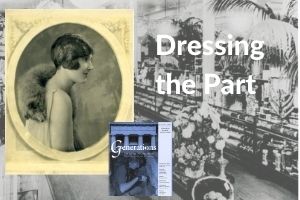
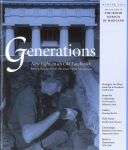 Part 2 of “Dressing the Part,” written by Melissa Martens Yaverbaum, former JMM curator. Originally published in Generations – Winter 2001.
Part 2 of “Dressing the Part,” written by Melissa Martens Yaverbaum, former JMM curator. Originally published in Generations – Winter 2001.
Unlike some groups of immigrants who came to America for temporary refuge, most Jewish newcomers came to America to find a permanent home, and they pursued assimilation aggressively through purchases of appropriate clothing and household items.[1] Whether they obtained clothing from small shops, neighborhood stores, discount stores, or department stores, many sought dramatic transformation. For those who could not afford the fanciest clothing, fashions shown in department store catalogs, advertisements, and display windows had a profound impact on styles that could be imitated across class lines.
As Andrew Heinze concludes in Adapting to Abundance: Jewish Immigrants, Mass Consumption, and the Search for American Identity, Jewish women coming to America embrace fashion enthusiastically.[2] Jewish women, through their traditional connections to retail and needle trades, combined with a drive to assimilate, were often aggressive in their pursuit of style. They were even stereotyped as having an uncanny zeal for extravagant clothing. Not only were Jewish women consumers, but they often had particular familiarity with clothing whether as store managers, shop girls, garment workers, balebostes, or as leaders of philanthropic and social events.
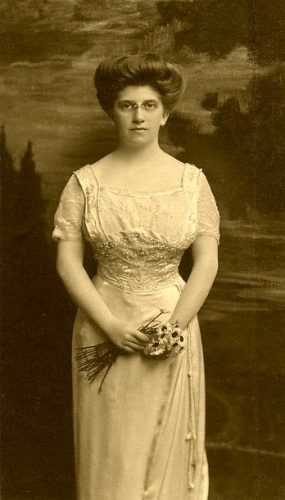
For well-off “German” Jewish women, clothing and fashion also came to have particular weight. In the decades that the first department stores emerged in Baltimore, a new kind of Jewish social life was taking shape in the fashionable neighborhoods around Eutaw Place. Here were settling the second generation of “German” Jews, a generation whose parents had arrived in America and succeeded in creating a comfortable lifestyle. These uptown Jews built and furnished handsome homes, organized Jewish social events, and established Jewish social clubs. The lifestyles of the well-off “German” Jews set new standards for the young Jewish lady in Baltimore, requiring appropriate attire for all occasions.
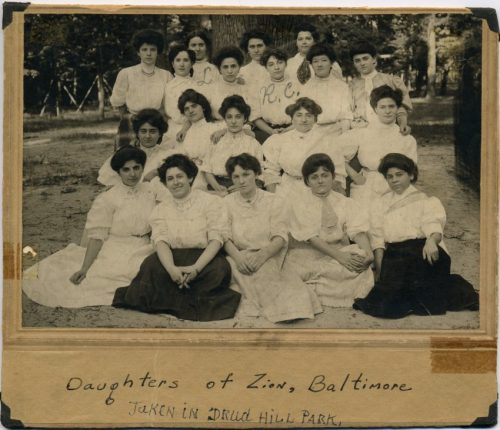
Many of the accoutrements of Victorian living, whether for special occasions or everyday use, came from local department stores that specialized in fancy and imported goods. Baltimore’s female shoppers turned to the department stores in search of models for middle- and upper-class lifestyles. Department store owners were glad to oblige, and were among the principal advocates for stylish living that required everything from fancy furniture, porcelain, and linens, to corsets, high-button shoes, evening gowns, fine hats, and gloves.
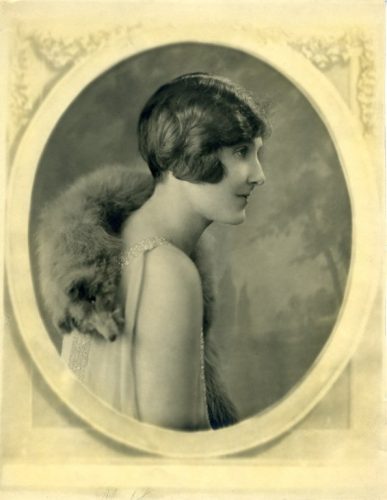
Printed advertisements for the leading department stores ran regularly in the Jewish Comment, one of the earliest Jewish weeklies in Baltimore that catered to “German” and well-off Jewish citizens. A Hutzler’s ad that appeared on December 13, 1896 highlighted some of the many goods sold for fancy occasions, and shows the way in which department stores helped to promote refined living:
HUTZLER BROTHERS 212, 214, 216, 218 N. Howard Street. Dress goods and fixings for balls and parties. No house could possibly be better equipped than Hutzler Bros. for all things required for evening wear. Wedding trousseaux a specialty.[3]
This kind of advertisement likely ran in non-Jewish publications at the same time, but an advertisement that promotes a Jewish business, in a Jewish newspaper, aimed at Jewish consumers, provides a stamp of cultural legitimacy that validates the merger between Jewish living and American style. Anticipating those occasions for which a Jewish person might need stylish clothing – weddings, confirmation ceremonies, and events at the Phoenix Club, Harmony Circle, or civic events – department store ads in Jewish periodicals matched their inventories to a willing, able audience.
Continue to Part 3: A Social Strategy publishing on April 22, 2019.
[1] Barbara A. Schreier, Becoming American Women: Clothing and the Jewish Immigration Experience 1880-1920 (Chicago: Chicago Historical Society, 1994) 50.
[2] Andrew R. Heinze, Adapting to Abundance: Jewish Immigrants, Mass Consumption, and the Search for American Identity (New York: Columbia University Press, 1990) 220.
[3] Jewish Comment, 13 December 1896.
